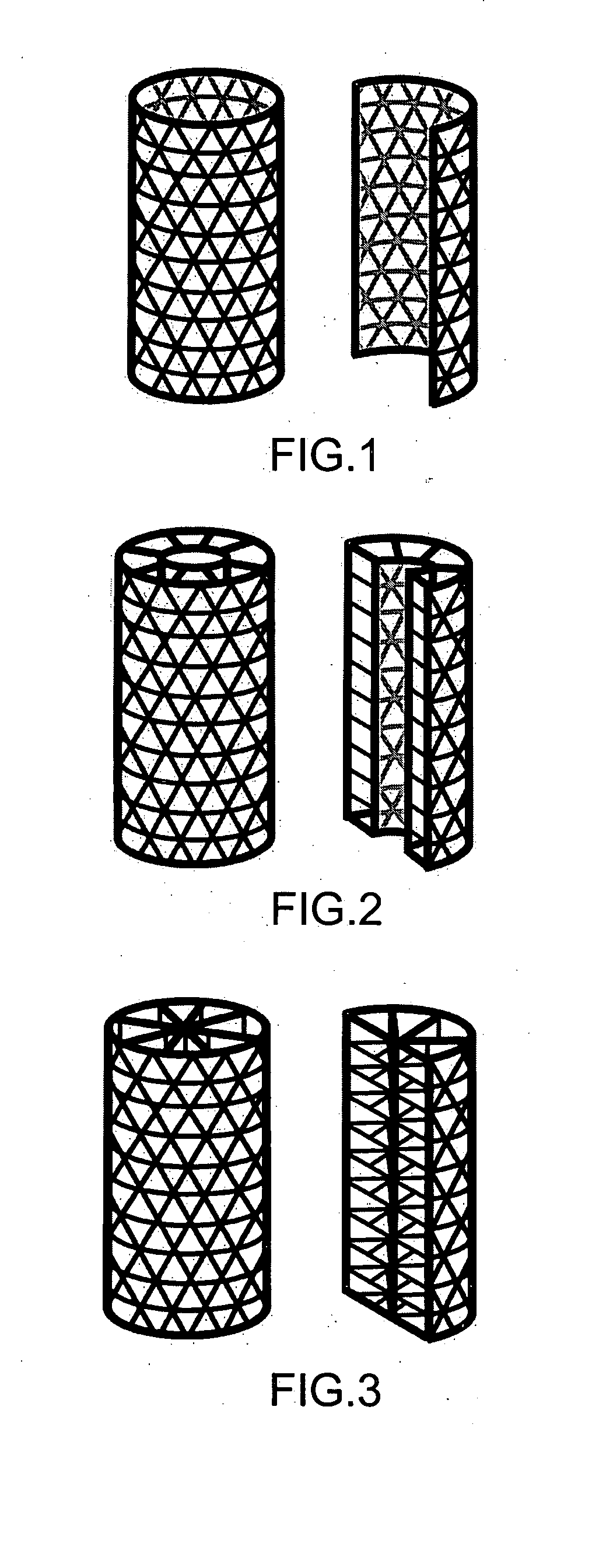Tissue integration design for seamless implant fixation
a meshtissue and implantable device technology, applied in the direction of prosthesis, shoulder joints, osteosynthesis devices, etc., can solve the problems of implant failure, compromise of function, loosening of implants,
- Summary
- Abstract
- Description
- Claims
- Application Information
AI Technical Summary
Benefits of technology
Problems solved by technology
Method used
Image
Examples
Embodiment Construction
[0034] As used herein, “a” or “an” is defined herein as one or more.
[0035] As used herein, “core” is defined as the internal space within or in-between a shell component to contain, at least in part, a material that induces or promotes biological activity
[0036] As used herein, the term “fenestrated” is defined as the quality of possessing macroscopic perforations or holes in an otherwise solid, hollow, or mesh component. In reference to the outer and / or inner shell component of the present invention, “fenestrated” refers to the quality of possessing holes or perforations through which material can grow into or out of the inside of the shell.
[0037] As used herein, the term “fenestrated shell component”, means a component comprising one or more than one fenestrated shell.
[0038] As used herein, the term “implant” is defined broadly, encompassing any and all devices implanted into humans or animals. These include, but are not limited to, orthopaedic implants and dental implants.
[00...
PUM
| Property | Measurement | Unit |
|---|---|---|
| mechanical | aaaaa | aaaaa |
| weight | aaaaa | aaaaa |
| biocompatible | aaaaa | aaaaa |
Abstract
Description
Claims
Application Information
 Login to View More
Login to View More - R&D
- Intellectual Property
- Life Sciences
- Materials
- Tech Scout
- Unparalleled Data Quality
- Higher Quality Content
- 60% Fewer Hallucinations
Browse by: Latest US Patents, China's latest patents, Technical Efficacy Thesaurus, Application Domain, Technology Topic, Popular Technical Reports.
© 2025 PatSnap. All rights reserved.Legal|Privacy policy|Modern Slavery Act Transparency Statement|Sitemap|About US| Contact US: help@patsnap.com



